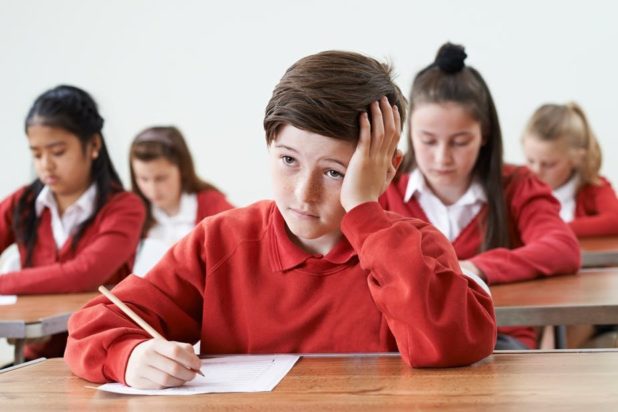Pomidor Quixote
Daily Stormer
October 22, 2019
Bad idea.
Nowadays, children are raised by tablets and venomous school teachers while their moms empower themselves clicking Excel sheets in an office and their dads contemplate suicide as they run the child support and alimony numbers in the quietness of their toilet sanctuary.
Contrary to what anyone could have predicted, that has serious adverse effects on the kids.
Children are risking short-sightedness unless they spend two hours a day outside and ditch screens and homework books, say experts.
A new epidemic of myopia in youngsters has been directly linked to the amount of time they spend doing ‘nearwork’.
Scientists have also predicted a rise in the numbers of people who will become blind in later life because people who develop short-sightedness at a young age have a higher risk of eye problems when they get older.
Some specialists believe the condition should be renamed ‘school myopia’ because the increase in diagnoses is so steep.
About 20 per cent of under-16s in the UK are short-sighted, compared with just 7.2 per cent in the 1960s.
Dr Clare Quigley, an opthalmologist at Galway University Hospital, conducted a study researching the lifestyles and health of 8,568 nine-year-olds which found a strong connection between the condition and a sedentary lifestyle.
She told the Sunday Times: ‘The factors that consistently appear most important in development of myopia are education and time spent indoors … more education is associated with greater myopia.’
Attending school damages kids’ eyesight, but at least it teaches them about The Holocaust.
Imagine all the things that kids could learn in the years they waste sitting in school listening to some viper rant about toxic masculinity if only the education system wasn’t designed to crush their souls.
Until now myopia has been seen mainly as a genetic condition but new research is now able to not only confirm, but quantify, how ‘nearwork’ can damage children’s vision.
…
The condition is far more common in westernised societies when compared with those who live outdoor lifestyles.
Experts predict roughly 50 per cent of people will have myopia by 2050, an 20 per cent increase to the number who are now.
…
In order to curb the increase, some people have suggested that opticians give out lifestyle prescriptions as well as medical ones by telling people to send children outside.
Medical prescriptions telling people to send their kids to play outside is a good idea, but an even better idea would be to turn two of the hours kids already spend in school into mandatory outside-play time.
It would be like a 2-hour recess where kids can socialize, play, make new friends, and do healthy kid stuff. Additionally, it would decrease the amount of time kids spend sitting in the classroom, which is a great thing, considering what we know about the sedentary lifestyle.
As a society, we aren’t getting as much exercise as we should. In fact, current activity guidelines state that adults should get at least 150 minutes of moderately intense activity – or 75 minutes of vigorous activity – every week. But research has found that one in four adults aren’t active enough.
…
Our research looked at what effect even short periods of physical inactivity had on our bodies. We found that even just two weeks of low activity actually increased participants’ risk of later developing serious health conditions such as cardiovascular disease.
…
We know that physical activity is good for us. This is irrefutable, and we’ve known this for a long time. As far back as the 1950s, the link between day-to-day physical activity and health was first identified in the London transport workers study.
…
Since then, some have branded physical activity a “miracle cure” for cardiovascular risk. Yet, as a society, we are more sedentary than ever, and cardiovascular-related deaths remain the leading cause of death worldwide.
What better way to ensure kids get enough physical activity and enough outdoor time than by integrating it into the school curriculum?
More play time, more socializing, more activity. Less sitting, less brainwashing, less passivity.
 Daily Stormer The Most Censored Publication in History
Daily Stormer The Most Censored Publication in History







